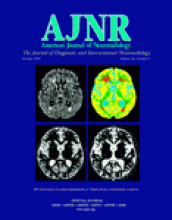Peter E. Valk, Dale L. Bailey, David W. Townsend, and Michael N. Maisey. New York: Springer-Verlag; 2004. 884 pages. $189.
This is a large and comprehensive book that covers all aspects of positron emission tomography (PET). It deals extensively with the physics and instrumentation as well as the clinical applications of PET. This book can serve both as a great textbook and an excellent reference for those involved or interested in clinical practice, research, and education in the field of PET. It would be very useful to physicians and residents, physicists, radiopharmacists, and technologists.
The book consists of 50 chapters, which are logically organized into 10 main parts. Each chapter was put together by well-known experts in the field. The topics discussed are thoroughly analyzed, and their clear presentation is enhanced with sufficient number of appropriate illustrations and images. An extensive list of references is provided at the end of each chapter.
Part 1, with 12 chapters, covers the basic sciences by first describing in chronologic fashion the historical developments and evolution of PET imaging. The physics and instrumentation of PET technology are provided in considerable depth and detail, and necessary background on principles of radiation physics is also included to aid the reader. Image reconstruction algorithms, quantitative methodologies, tracer kinetic modeling, coregistration of structural and functional images, and hybrid PET/CT technologies are also discussed. There are also chapters on radiochemistry, radiation dosimetry, and radiation protection in PET.
Part 2, with 7 chapters, covers PET in the central nervous system by looking into cerebral physiologic measurements and neurochemical systems as well as clinical applications in seizure disorders, dementia, movement disorders, cerebrovascular disease, and psychiatric disorders. Part 3, with 3 chapters, deals with applications of PET in the cardiorespiratory systems by discussing myocardial perfusion, myocardial viability, and pulmonary function. Part 4 is a quite large and extensive section with 19 chapters that looks at PET applications in oncology. It includes whole-body imaging, tumor imaging (brain, pancreas and liver, urologic), cancer (lung, head and neck, colorectal, esophageal and gastric, breast, testicular, ovarian and cervical), lymphoma, melanoma, sarcoma, skeleton imaging, and tumor hypoxia. It also describes assessment of treatment response by 18F-fluorodeoxyglucose (18F-FDG) PET imaging and tumor assessment with labeled pyrimidines. Part 5, with 2 chapters, discusses PET imaging in infectious diseases including HIV. Part 6 has one chapter on PET imaging in pediatric disorders.
The technologist’s perspective is discussed in part 7 with one chapter. It covers such topics as setting up a PET service, patient preparation and scanning protocols, and radiation protection of the technologist. Part 8, with 2 chapters, provides technology evaluation by looking into the economics and the clinical efficacy of PET. Part 9, with 2 chapters, discusses the role of PET in drug discovery and development including anticancer drugs. Finally, part 10, with one chapter, is dedicated to PET in imaging gene expression and therapy.
Overall, this is an excellent book and perhaps the most comprehensive one available with detailed descriptions and explanations of the PET modality. I recommend it without any hesitation to those interested in clinical practice, research, and education in the field of PET.
- Copyright © American Society of Neuroradiology













